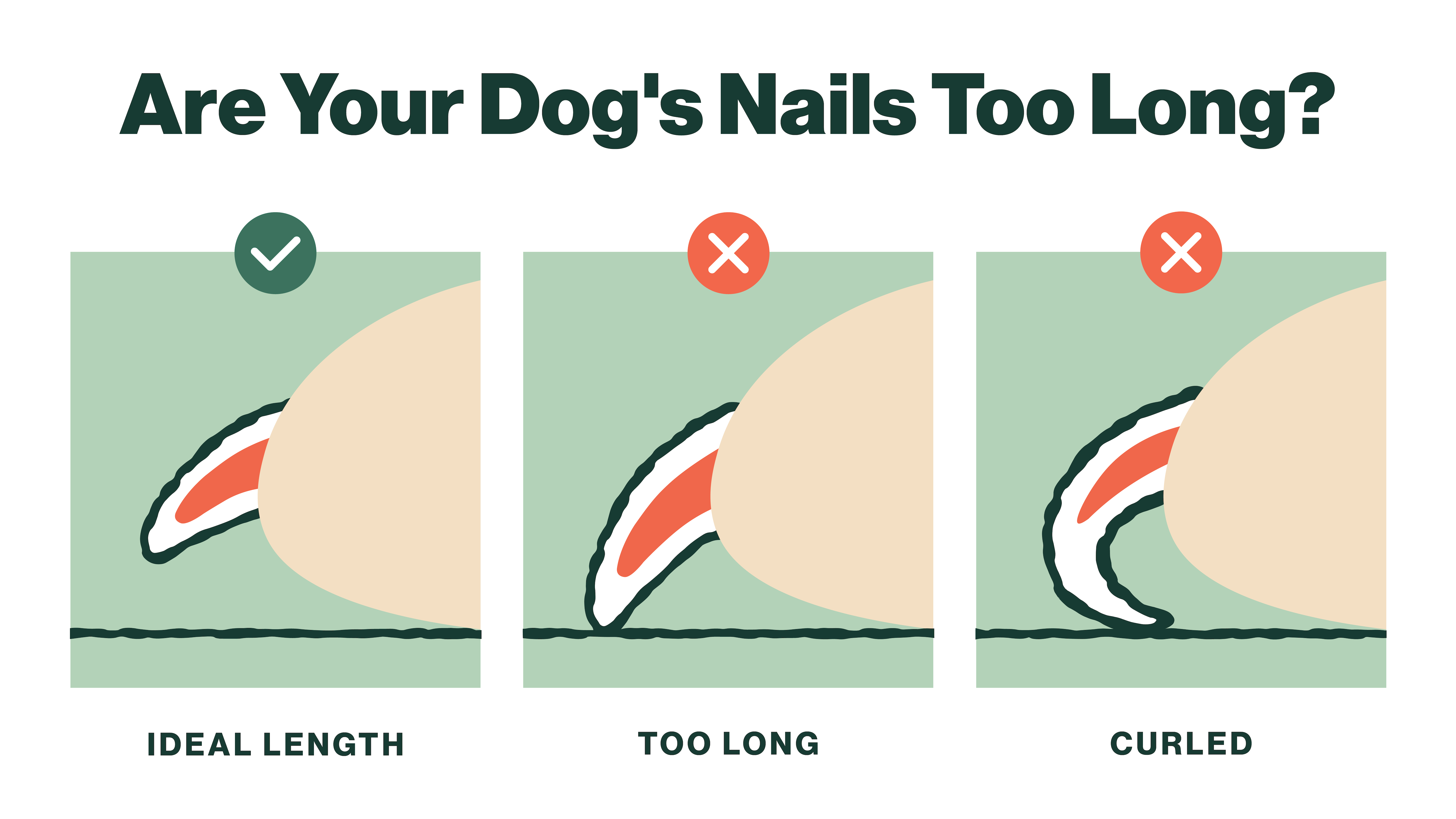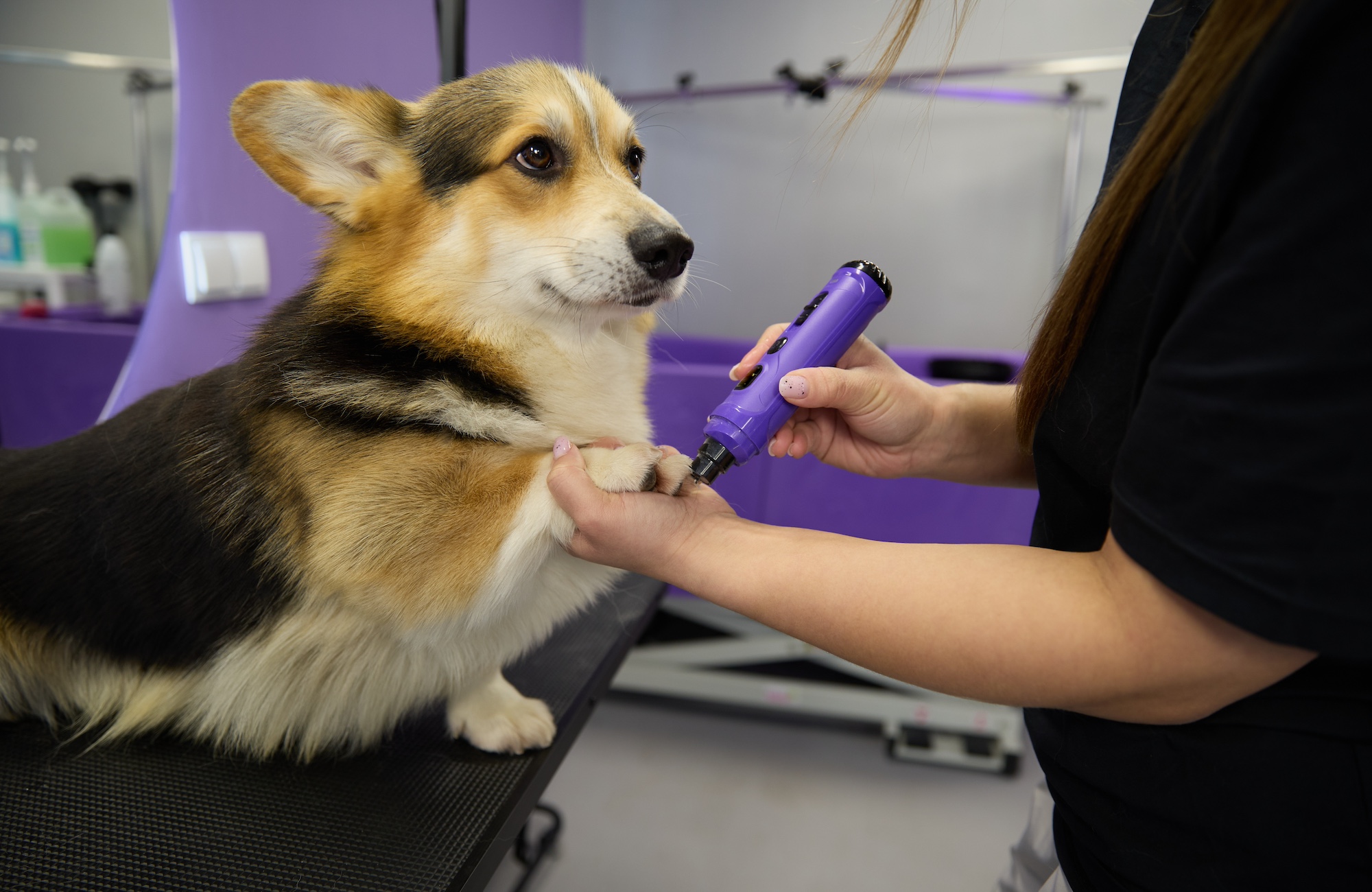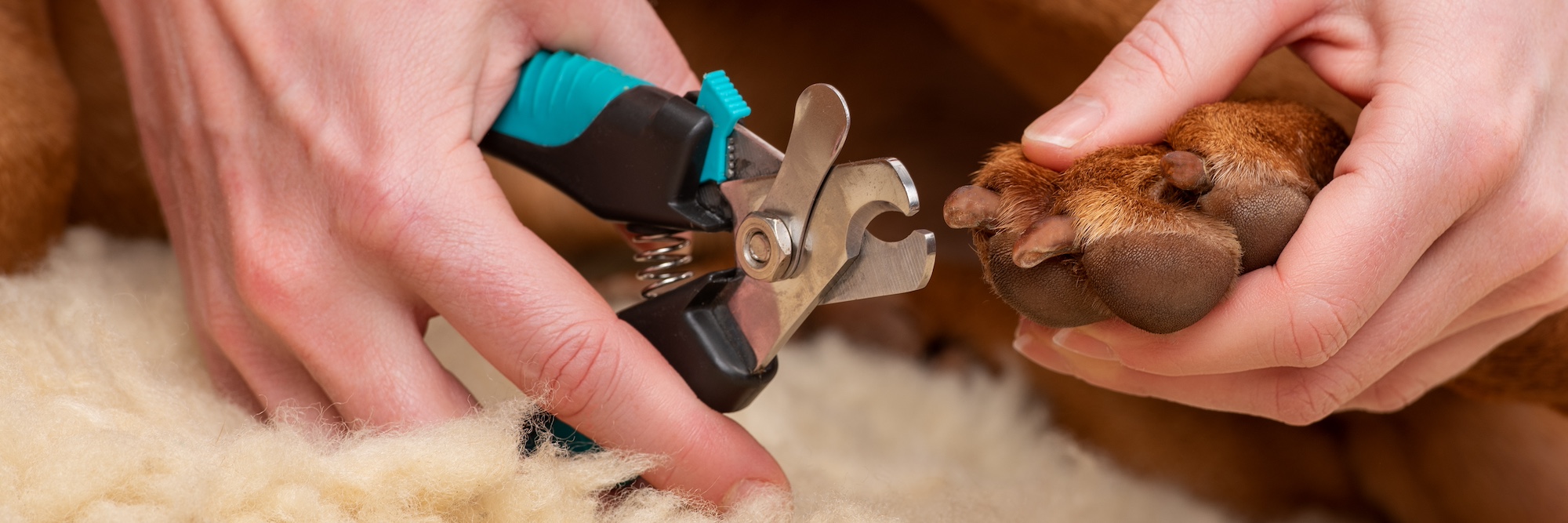The Farmer’s Dog customer AB asks: “How often do my dog’s nails need clipping, and how can I tell that it’s time?”
Dear AB:
How often dogs’ nails (or, technically, claws) need clipping varies, so there’s no one-size-fits all answer to the first part of your question—but around once per month is normal. If your dog’s claws are making contact with the ground when they stand, or if you can hear them on the ground when they walk, it’s probably time to trim them.
If you’re not sure, it never hurts to consult your vet about how long your dog’s claws are getting.
If your dog is inactive, or if their claws grow quickly, they may need more frequent trims. Conversely, if your dog walks a lot on sidewalks or other hard surfaces that wear down their nails, you may get by with less-frequent clipping—but it is highly unlikely that they will walk enough on such surfaces that they’ll never need to be trimmed at all.

If your dog’s claws touch the ground when they’re standing, or if they curl, they’re too long. Trim long nails cautiously so you don’t cut the quick.
Why you should keep your dog’s claws trimmed
The above covers the basics about how frequently to trim a dog’s nails, and how you can tell that it’s time—but why is it important not to skip this part of the grooming routine?
In addition to the fact that long claws on a dog can scratch unsuspecting humans, there are health implications for dogs whose claws grow too long.
- Long nails can crack, split, or become ingrown. This can be very painful for a dog, and resulting wounds can get infected.
- Long nails can impact dogs’ posture and gait, causing pain and even leading to tendon problems or arthritis.
- Long nails can curl into the paw, causing wounds or infections. This is an especially big risk when it comes to the dewclaw, which doesn’t come into contact with the ground when a dog walks.
How to trim your dog’s nails
Using clippers is one way to keep your dog’s claws shorter, but it’s not the only way.
If it’s easier for you and your dog, you can try a Dremel or another grinder, a scratching pad, or a nail file. If you’re not sure which tools are right for your dog, don’t hesitate to consult with your vet and a behaviorist.
Here’s what you’ll need to trim your dog’s nails:
- Clippers, a Dremel or other grinder, a nail file, a scratching pad, or some other vet-approved trimming device
- If the hair around your dog’s nails is long, a pair of dull, safe children’s scissors to trim it back. Otherwise, it might get in the way of trimming or even get stuck in a Dremel.
- Treats, to keep your pup happy (praise them for calm behavior, too)
- Styptic powder or cornstarch, in case you accidentally cut the quick (the blood supply that feeds the nail)
- Possibly, if your dog is not great at having their nails trimmed, a friend who can help distract the dog and keep them happy during the process

Get your dog used to trimming
Many dogs are afraid of having their nails trimmed, or just don’t like having their paws handled. If yours is among them, don’t simply hold them in place and try to force them to tolerate grooming. This is a recipe for a scared dog and, possibly, an injured human.
Instead, take steps to acclimate your dog to trimming so that they understand it’s not so bad. You can do this by giving them treats at every step of the process, and going slowly until they can remain calm throughout. For a more detailed look at desensitization and counterconditioning, read our full article on the topic.
You want your dog to be able to calmly, happily accept treats from you while you’re handling their paws before you even think about using the clippers. Once they can deal with their paws being handled, move on to the presence and sound of the tool you’re using. Only once they’re comfortable with that should you move on to actually clipping or grinding—starting with just a little bit off of one claw. This may feel like a glacial pace, but it’ll improve the chances that your dog feels good about nail trimming.
Be careful of the quick
However you cut your dog’s claws, be careful to avoid the sensitive flesh of the quick. This can be particularly challenging when their claws are dark. Be very cautious and only cut a little at a time.
If you cut the quick, remain calm. To stop the bleeding, apply some styptic powder or cornstarch. Give your dog a treat, too.
A dog’s quick will grow longer as their claws do, so if it’s been a long time since you’ve cut your dog’s nails you will need to start slowly. Dogs who have gone months without a claw trim can’t suddenly have them cut down to a normal length. Instead, take a very tiny amount off. It may take months of trimming or filing small amounts off of your dog’s nails every few days for the quick to recede enough that you can get them as short as you’d like.
Wondering where the quick is? If your dog has light-colored nails, it should be easy to see; it’s the pink color you’ll notice coming through under the nail. If your dog has dark-colored nails, you probably won’t see the quick at all—so use extra caution. If you look at the nail head-on after cutting a bit, you’ll see a little white ring. That’s your signal to stop for now, as you’re getting close to the quick.
Don’t forget the dewclaws
If your dog has dewclaws, which go on their equivalent of the thumb, they’ll need extra attention. This is because they don’t come into contact with the ground, and can grow until they curve into the paw. Thus, even dogs who walk quite a bit on hard surfaces may need fairly frequent dewclaw trims. The usual advice about going slowly and avoiding the quick applies here.
You can always ask for help
The tips above can get you started, but we’re just scratching the surface. If you’re not confident in your trimming technique, ask a vet to demonstrate—or arrange for them to do it for you. If you have a trusted groomer, you can also decide to let them trim your dog’s claws regularly. As long as you keep at the task, and do so in a way that prioritizes your dog’s health and comfort, we’re sure you’ll nail it.










